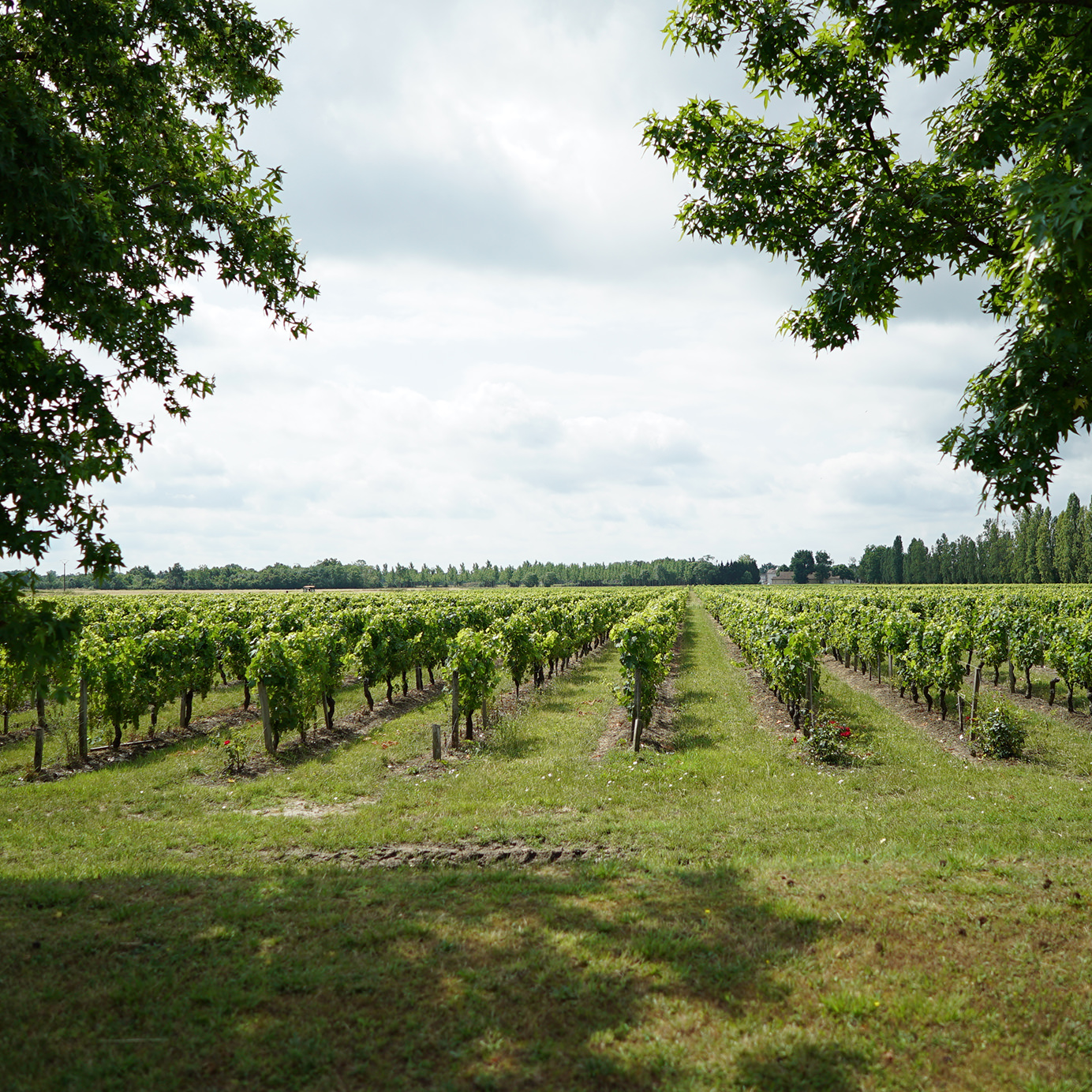In June 2018, Bordeaux celebrated the 20th anniversary of Bordeaux Fête le Vin, the biggest wine tourism event in Europe. Nearly 62,000 people turned out for the five-day event. It’s no secret that Bordeaux is one of the world’s premier winemaking regions and in recent years, a top tourism destination — nearly 6 million people visit the “Port of the Moon” annually, many for its wine.
In July, I was one of them. On behalf of Duclot, a Bordeaux wine importer that was hosting a group of sommeliers from New York and Los Angeles, I joined a tour of the Médoc, a wine growing region on the left bank of the Gironde, a region known — and internationally acclaimed — for its Cabernet Sauvignon-dominant red blends. Our day-long tour took us behind the scenes at five of Bordeaux’s most famous and celebrated wineries: Château Margaux; Château d’Issan; Château Grand-Puy-Lacoste; Château Haut Batailley; and Château Talbot.
Many of these estates date back centuries, and hold their family secrets close — in fact, few were open for public tours at the time of our visit. Almost as inaccessible are the wines, with big-ticket bottles retailing between hundreds and hundreds of thousands of dollars. Here’s a look inside five of Bordeaux’s most coveted chateaux.
Château Margaux
Margaux
First Growth
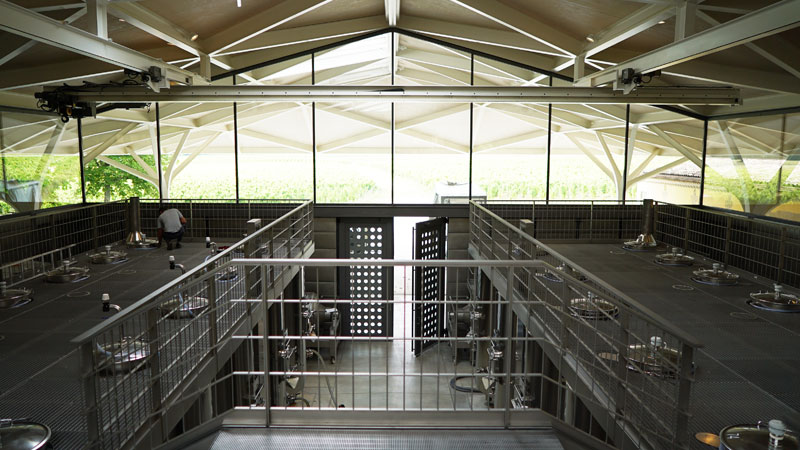
The legendary Margaux is one of five first growth wine estates in Bordeaux. As such, its wines are among the most famous and expensive in the world. Planting since the 16th century, Margaux has been recognized for producing the highest class of Bordeaux wines since 1855. Bottles retail for an average of more than $800 a bottle (one bottle in particular was valued at $225,000. Sadly, no one ever drank it.)
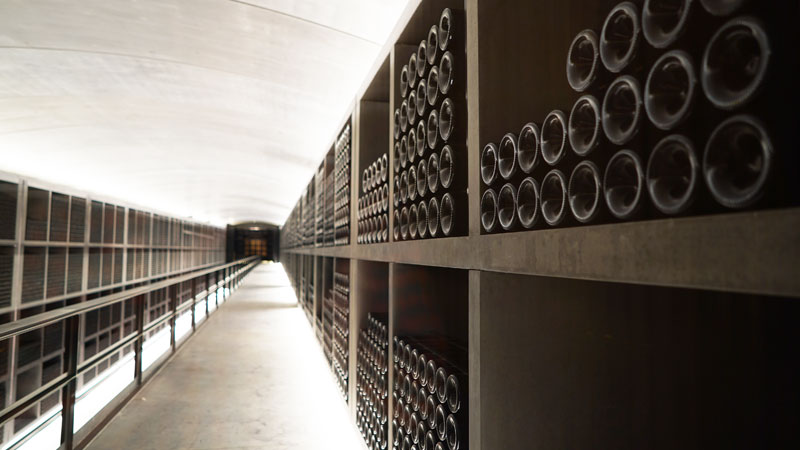
Margaux produces four wines: its first wine, Château Margaux; second wine, Pavillon Rouge du Château Margaux (so named since 1908 — prior to that it was simply called “Château Margaux 2nd wine” going back to the early 17th century); Pavillon Blanc, a stunning white; and Margaux du Château Margaux, its third wine, which was created for the American market as a way to still provide an affordable option but is now almost as expensive and hard to find as the first two wines.
In addition to an underground wine library, which catalogs thousands of vintages going back to 1848, Margaux’s barrel room sits under the vines. The original cellar has been in use since 1815.
Château d’Issan
Margaux
Third Growth
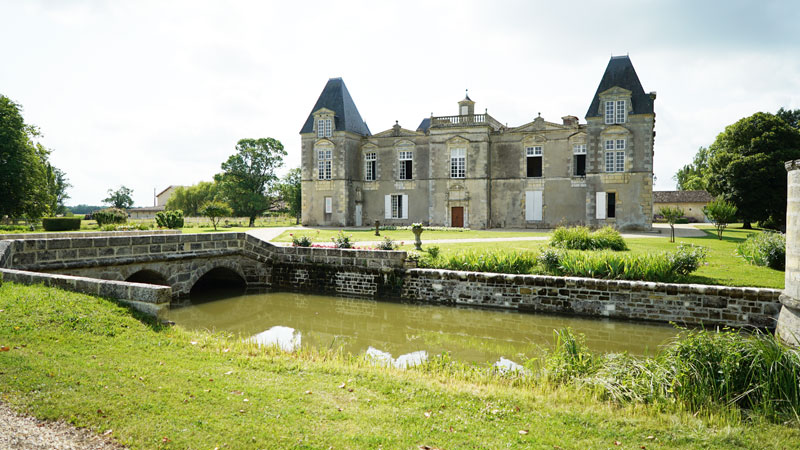
Château d’Issan’s slogan, “For the table of kings and the altar of God,” is not entirely in vain: The wine was served at the wedding of soon-to-be Queen of England (and ex-queen of France) Eleanor of Aquitaine and Henry II in 1152. Today, the remote, rustic estate in the middle of the Margaux appellation is a working vineyard and a family residence.
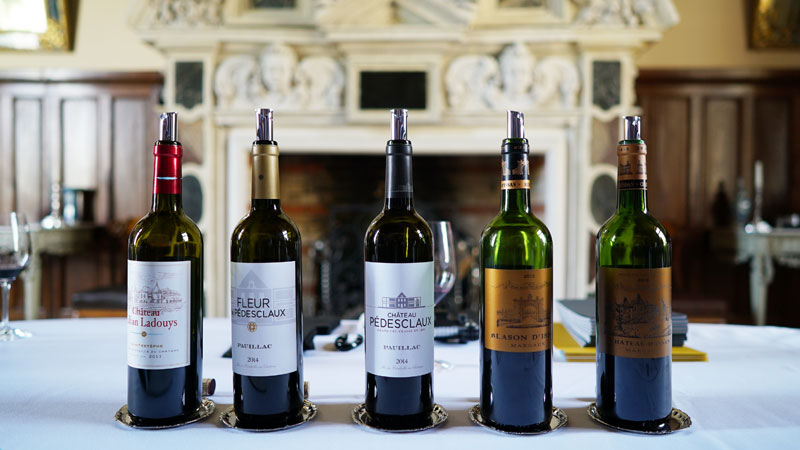
D’Issan produces Château d’Issan Margaux, its main wine; Blason d’Issan Margaux, its second wine, introduced in 1995; Haut-Médoc d’Issan, made with grapes from a nearby estate in the Haut-Médoc appellation; and Moulin d’Issan, made with grapes from d’Issan’s Bordeaux Supérieur AOC plots, the closest to the Gironde Estuary. The latter was named for a 17th-century windmill whose ruins are still on the property.
Château Talbot
Saint-Julien
Fourth Growth
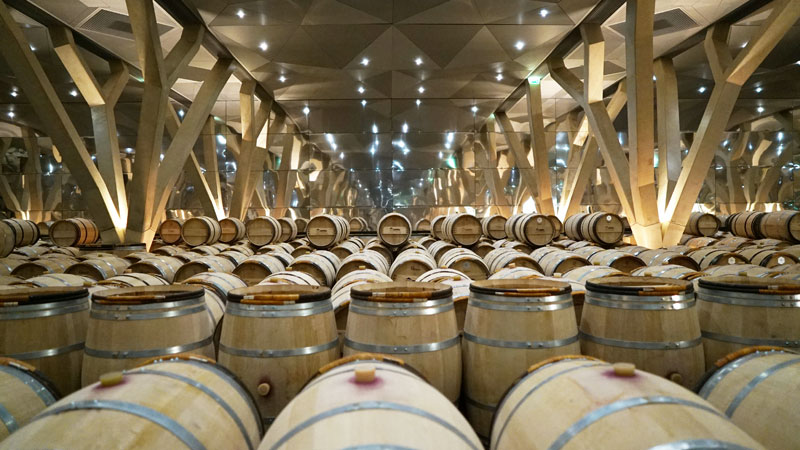
Named for a famous English military commander, governor of Guyenne, and, eventually, Earl of Shrewsbury, Connetable Talbot (who died in the battle of Castillon in 1453), the Talbot estate and vineyard has been in the Cordier family since 1918. The vineyard produces three wines: Château Talbot; Connetable Talbot, produced since the 1960s; and Caillou Blanc, derived from one of the first white wine replantings in the Médoc region in the 1930s.
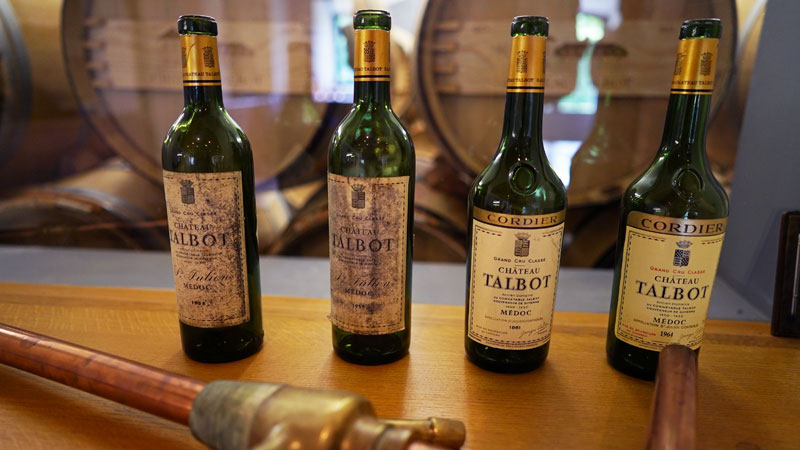
The family recently renovated the estate’s winemaking facilities, vat rooms, and barrel cellars. The latter incorporates stunning angular architecture and lighting design, making it appear as a “mineral forest.” According to our guide, the barrel cellar was designed by one of Talbot’s owners, who is an architect.
Château Grand-Puy-Lacoste
Pauillac
Fifth Growth
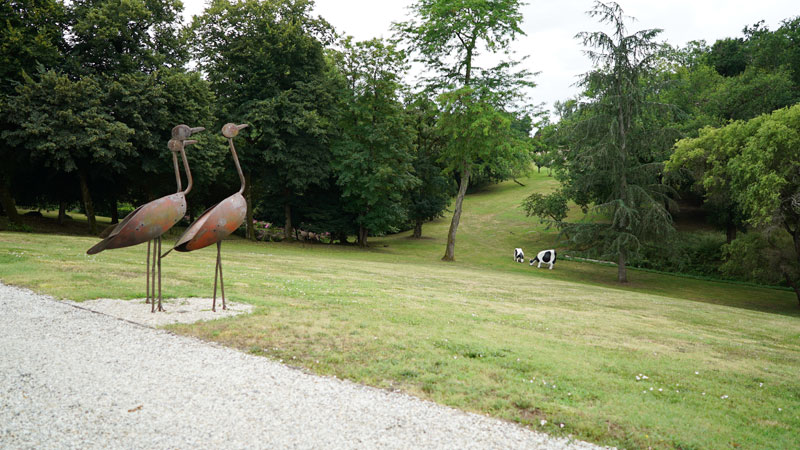
Château Grand-Puy-Lacoste is one of the oldest estates in the Médoc, dating back to the 16th century. Under the Borie family, its owners since 1978, this fifth-growth château produces two exemplary wines: Grand-Puy-Lacoste and Lacoste Borie.
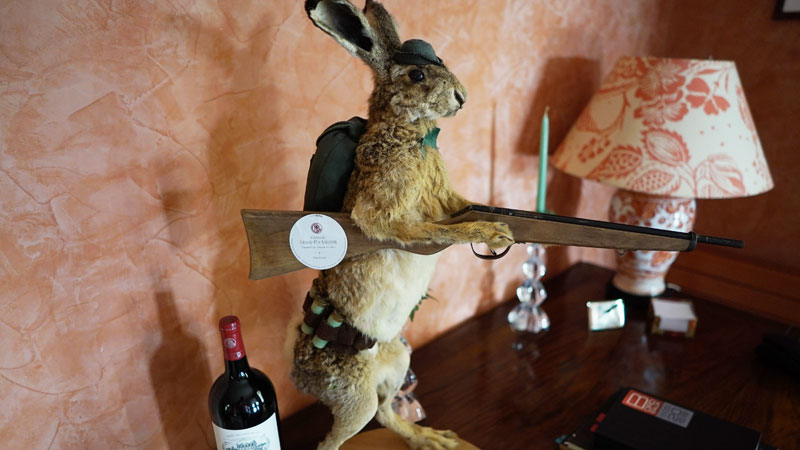
Lacoste is fine wine for the people, priding itself on producing Pauillac that’s (relatively) affordable. Owner Francois-Xavier Borie has served as deputy mayor of the town, president of the Union of Saint-Julien Winemakers, and is currently a member of the Médoc Wine Federation, a board member of the Bordeaux Wine Council, and the Council of Great Classed Growths, according to Château Grand-Puy-Lacoste. The château also supports local and regional sporting events, and has been a sponsor of the Médoc Marathon since its inception in 1983.
Château Haut-Batailley
Pauillac
Fifth Growth
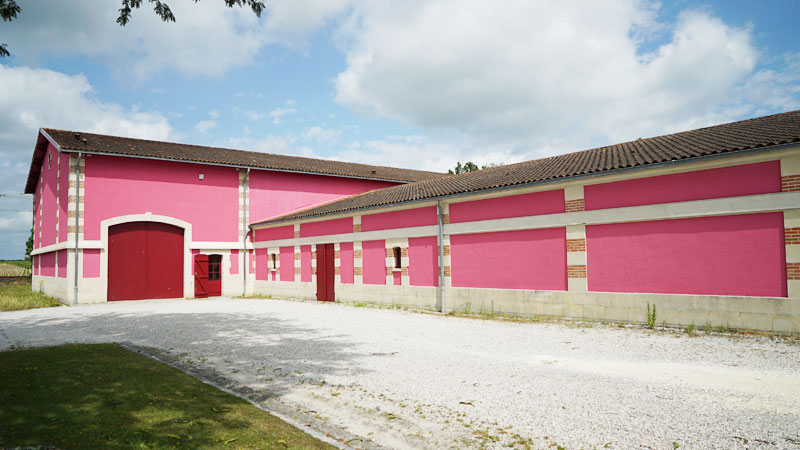
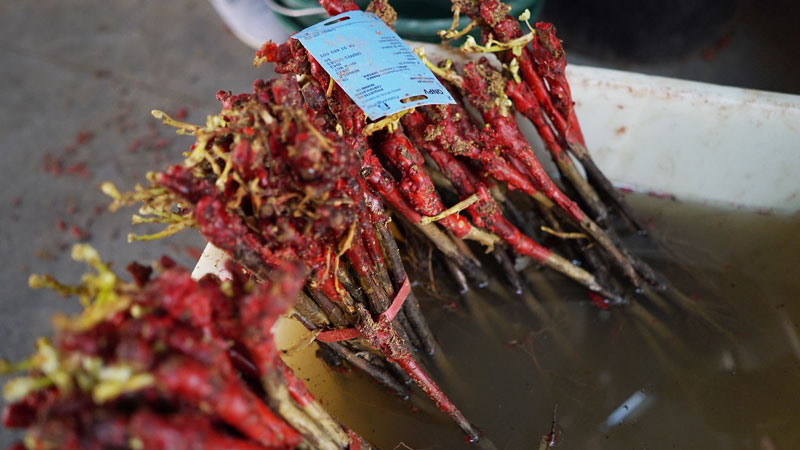
Located under the watchful eye of a tower of the Virigin Mary circa the 18th century, Haut-Batailley was acquired by the Cazes family of Château Lynch-Bages fame in 2017. Since then, it’s undergone a modern makeover, including its magenta-pink paint job (“red samba,” according to our guide). Haut-Batailley has also brightened up its price tags, raising bottle prices from €29 (about $34) to €42 (about $49) for its 2017 vintage, both of which are relatively affordable for a fifth-growth winery, especially when compared to its parent Lynch-Bages brand.
